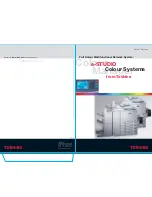
What Is a Project?
In Revit Architecture, the project is the single database of information for your design—the building
information model. The project file contains all information for a building design, from geometry to
construction data. This information includes components used to design the model, views of the project,
and drawings of the design. By using a single project file, Revit Architecture makes it easy to alter the design
and have changes reflected in all associated areas (plan views, elevation views, section views, schedules, and
so on). Having only one file to track also makes it easier to manage the project.
As you design the building, you create different views of the project, such as sections, plans, and elevations.
When you change the building design in one view, Revit Architecture propagates those changes throughout
the project. This means that the 3D model, any views of the model, the drawing, and the schedules are
associative; they all update to reflect the changes.
Before You Begin a Project
Before you create a project in Revit Architecture, consider the following approaches to the design process:
■
Using levels and grids. You can begin the design process by defining levels and grids for the structure.
See
Levels
on page 1041 and
Grids
on page 1033.
■
Importing data. If you started the design process using another CAD program (such as AutoCAD), you
can import existing data. Revit Architecture imports various CAD formats, including DWG, DXF, DGN,
and ACIS SAT files, as well as SketchUp (SKP) files and Industry Foundation Classes (IFC). See
Import/Link
on page 1306.
■
Massing. You can start a project by designing a conceptual model. After you create basic shapes with the
massing tools, you can convert mass faces to building elements. See
Conceptual Design with Massing
Studies
on page 517.
Building with Elements
You create buildings by adding elements to a design. In projects, Revit Architecture uses 3 types of elements:
■
Model elements
represent the actual 3D geometry of the building. They display in relevant views of the
model. For example, walls, windows, doors, and roofs are model elements.
■
Datum elements
help to define project context. For example, grids, levels, and reference planes are datum
elements.
■
View-specific elements
display only in the views in which they are placed. They help to describe or
document the model. For example, dimensions, tags, and 2D detail components are view-specific elements.
What Is a Project? | 73
Summary of Contents for 24000-000000-9860 - Revit Architecture - PC
Page 1: ...Revit Architecture 2009 User s Guide April 2008 240A1 050000 PM02A ...
Page 4: ......
Page 56: ...18 ...
Page 116: ...78 Chapter 3 Revit Essentials ...
Page 172: ...134 Chapter 4 ProjectViews ...
Page 178: ...Schedule with Grid Lines Schedule with Grid Lines and an Outline 140 Chapter 4 ProjectViews ...
Page 554: ...516 ...
Page 739: ...Curtain wall Curtain Grid Curtain Walls Curtain Grids and Mullions 701 ...
Page 1004: ...966 ...
Page 1136: ...1098 ...
Page 1226: ...1188 ...
Page 1250: ...1212 ...
Page 1276: ...1238 Chapter 20 Design Options ...
Page 1310: ...1272 ...
Page 1366: ...1328 ...
Page 1406: ...1368 ...
















































